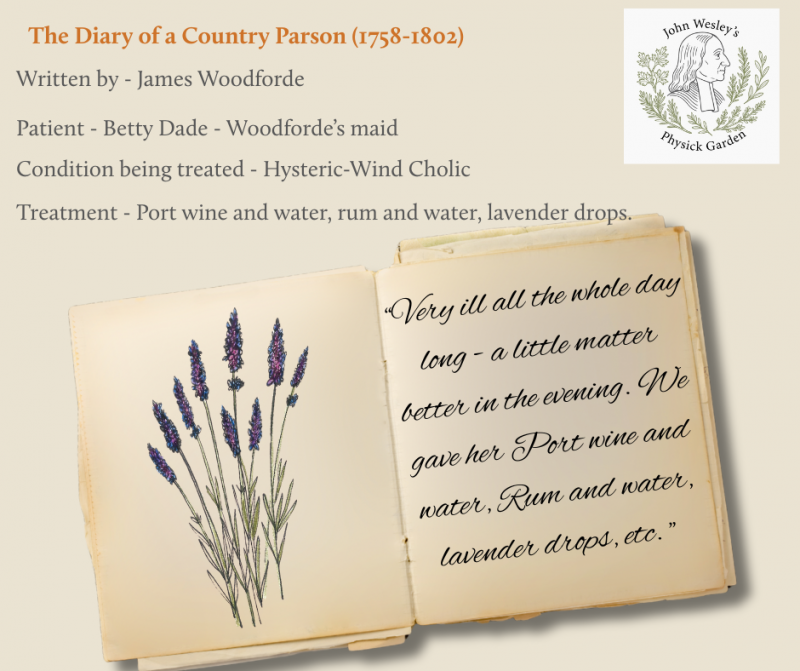The numbers listed under each plant are the number of the remedy as it appears in the 4th edition – reprinted in London in 1847 of Primitive Physick.
Hazel (Corylus avellana)
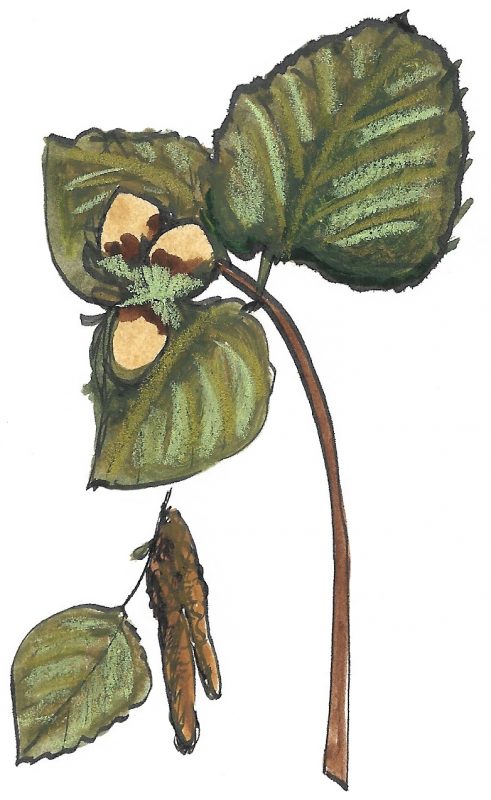 Hazel has a reputation as a magical tree. A hazel rod is supposed to protect against evil spirits, as well as being used as a wand and for water-divining. In some parts of England, hazelnuts were carried as charms and/or held to ward off rheumatism. In Ireland, hazel was known as the ‘Tree of Knowledge’, and in medieval times it was a symbol of fertility.
Hazel has a reputation as a magical tree. A hazel rod is supposed to protect against evil spirits, as well as being used as a wand and for water-divining. In some parts of England, hazelnuts were carried as charms and/or held to ward off rheumatism. In Ireland, hazel was known as the ‘Tree of Knowledge’, and in medieval times it was a symbol of fertility.
Wesley’s recommendations:
256 – A Cut Vein or Sinew – Apply the inner green rind of hazel fresh scraped.
Other therapies
The nuts and seeds are a rich source of nutrients, and hazelnuts are high in vitamins B1 and B6.
Yarrow (Achillea millefolium)
Yarrow was believed to protect against evil spirits and the name Achillea is taken from Greek mythology. Achilles used yarrow leaves to heal his wounded soldiers at the siege of Troy. It has long been used in traditional medicine, in part due to its astringent properties and the mild laxative effect of its leaves.
Wesley’s recommendations:
284 – Wounds – Apply juice or powder of yarrow.
285 – Inward Wounds – Infuse yarrow, 12 hours in warm water. Take a cup of this four times a day.
Other therapies
In the 16th century the crushed leaves were used to stop nosebleeds. Yarrow and its North American varieties were traditionally used by many Native Americans: the The Navajo historically considered it a “life medicine” and chewed the plant for toothaches and used its infusions for earaches.
Onion (Allium cepa)
A vegetable of great antiquity, onions were cultivated by the Egyptians, not only as food but for placing in the thorax, pelvis or near the eyes during mummification. In Roman times, six varieties were recorded. Onions were highly regarded for their antiseptic qualities. Many legends surround onions. In common with Wesley, in Ireland they were said to cure baldness. “Rub the sap mixed with honey into a bald patch until it turns red. If properly applied, this will grow hair on a duck’s egg.”
Wesley’s recommendations:
67 – Deafness – Three or four drops of onion juice at lying down, and stopt with a little wool.
71 – A Settled Deafness – Take a red onion pick out he core, and fill up the place with oil of roasted almonds. Let it stand a night, then bruise and strain it. Drop three or four drops into the ear morning and evening, and stop it with black wool.
76 – The Ear Ache – Rub the ear hard for a quarter of an hour – Tried – or put in a roasted fig or onion as hot as may be – Tried.
80 – Noise in the Ears – Drop in juice of onions.
Other therapies
As with garlic, onions warm the body and stimulate the circulation. It has been proven to treat infected wounds; it causes the body to “weep” so releasing toxins. It can be used directly on the skin to gain relief from burns, and a poultice of roasted onion is accepted as a cure for earache.
Betony (Betonica officinalis)
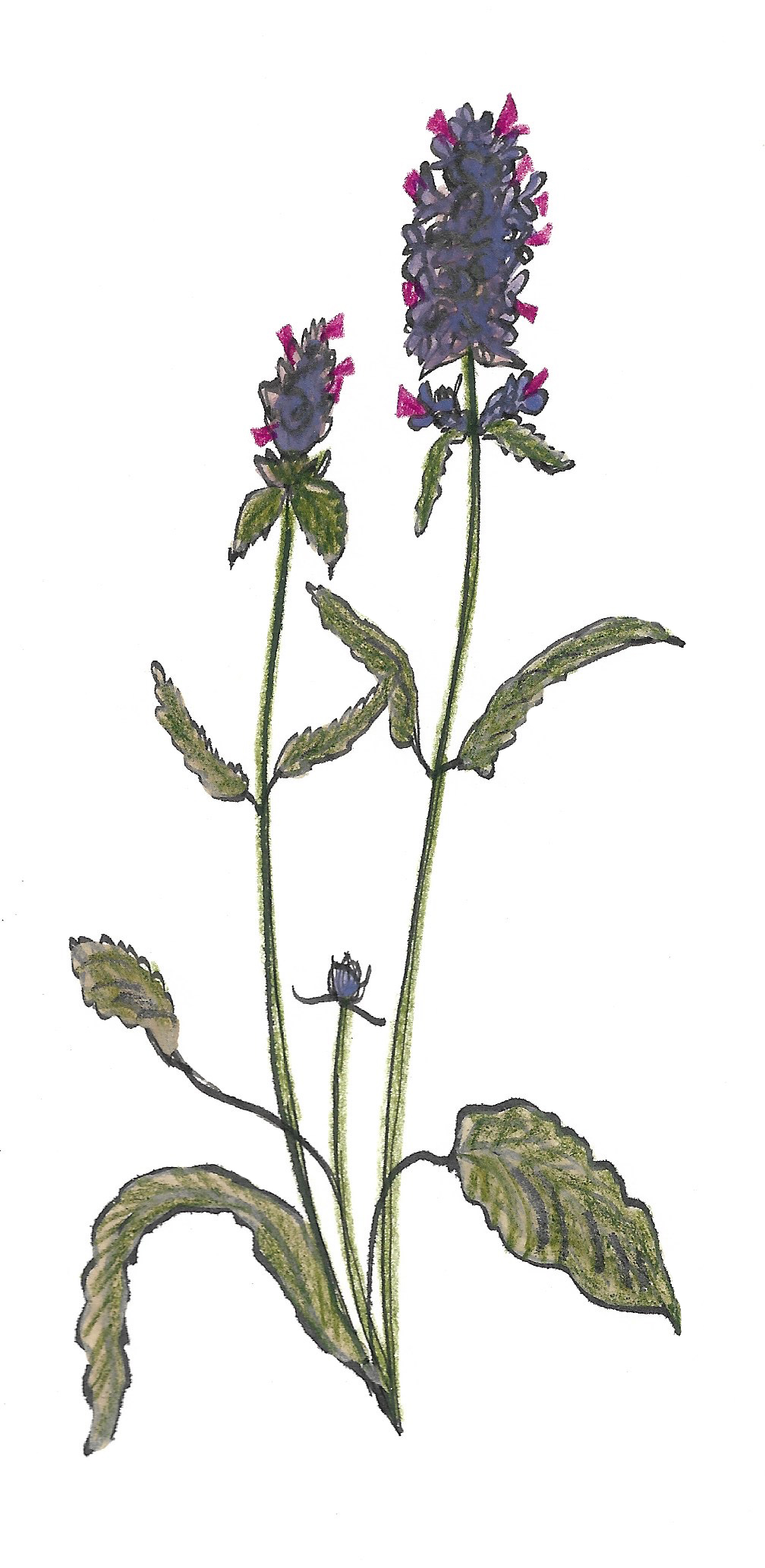 Betony, is in the mint family, other vernacular names include wood betony, common hedgenettle, purple betony, bishopwort, or bishop’s wort. The Anglo-Saxons had it as their most magical plant as it was effective against the elf sickness. In the 11th century it was used against Devilish afflictions of the body. In the 17th century, the herbalist Gerard recommended it for “them that have the falling sickness”. It was also used to treat the bites from mad dogs and to counteract the poison of venomous serpents. In the 18th century it was used in herbal snuffs and tobaccos.
Betony, is in the mint family, other vernacular names include wood betony, common hedgenettle, purple betony, bishopwort, or bishop’s wort. The Anglo-Saxons had it as their most magical plant as it was effective against the elf sickness. In the 11th century it was used against Devilish afflictions of the body. In the 17th century, the herbalist Gerard recommended it for “them that have the falling sickness”. It was also used to treat the bites from mad dogs and to counteract the poison of venomous serpents. In the 18th century it was used in herbal snuffs and tobaccos.
Wesley’s recommendations:
85 – Clouds Flying before the Eye – Take a drachum of powdered betony every morning (or be electrified).
284 – Wood-betony bruised – This quickly heals even cuts or sinews, or draws out thorns or splinters.
Other therapies
It is used to treat diarrhoea, cystitis, liver and gall infections, in fact it has been claimed that it can cure over 47 different ailments. The root is, however, TOXIC.
“To cure toothache put a leaf of betony, bruised, up the nose” – JOHN WESLEY
Turnip (Brassica Rapa)
This is a very ancient vegetable, known to the Greeks and Romans. It was introduced to Canada in 1541 and to Virginia in 1609. It was welcomed and grown by the native Americans.
Wesley’s recommendations:
144 – Legs Inflamed – Apply bruised or boiled turnips. Purges are also absolutely necessary.
250 – The Stranguary (frequent and painful urination) – Drink a concoction of turnips sweetened with clarified honey.
244 – To Prevent the Tooth-ache – Lay roasted turnip parings as hot as may be, behind the ear.
Other therapies
As with all other cruciferous vegetables turnips are linked to lower rates of cancer and an all round nutrition boost.
Comfrey (Symphytum officinale)
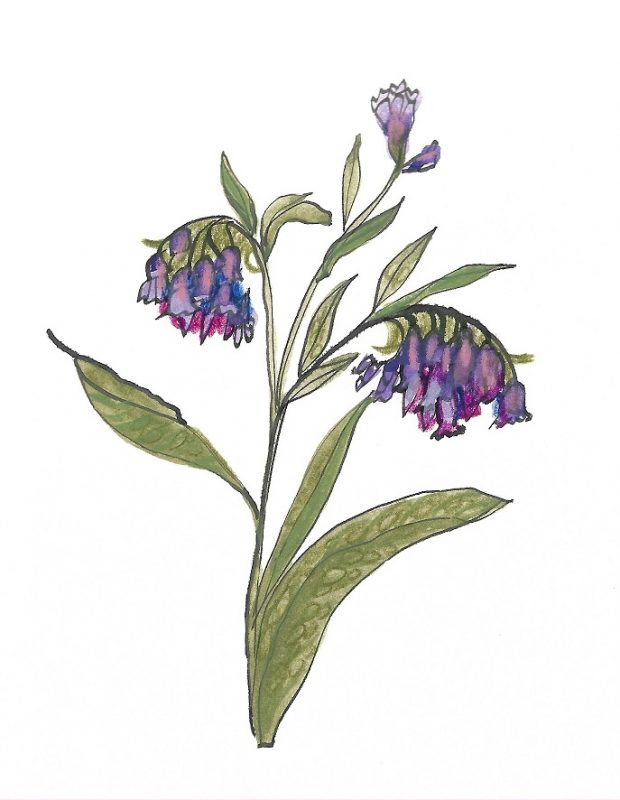 Comfrey is a perennial flower that belongs to the borage family. One of its most popular names, “knitbone,” comes from its potential benefits for sprains, burning, and bruising. It has been cultivated since ancient times for its medicinal properties. It contains a compound called allantoin, which stimulates cell growth and repair of damaged tissues. It was used externally for wounds, bruises, sprains, and fractures.
Comfrey is a perennial flower that belongs to the borage family. One of its most popular names, “knitbone,” comes from its potential benefits for sprains, burning, and bruising. It has been cultivated since ancient times for its medicinal properties. It contains a compound called allantoin, which stimulates cell growth and repair of damaged tissues. It was used externally for wounds, bruises, sprains, and fractures.
Wesley’s recommendations:
287 – Wounded Tendons – Boil comfrey roots to a thick mucilage or jelly, and apply this as a poultice, changing it twice a day.
Other therapies
It was also taken internally for ulcers, colitis, and other digestive problems. However, this practice is now discouraged, as comfrey also contains toxic alkaloids that can harm the liver and cause cancer. It is considered unsafe to ingest comfrey in any form. Despite the risks, some people still use comfrey as a herbal remedy, either by applying it to the skin or making a liquid fertilizer from its leaves. Comfrey is said to be beneficial for plants, especially tomatoes, as it is rich in potassium and other nutrients.
“To prevent the tooth ache – Wash the mouth with cold water every morning – or rub the teeth often with Tobacco ashes – Be electrified through the tooth – or rub the Cheek a Quarter of an Hour – or put a clove of garlick into the Ear – or Parsley much bruised, with a little Bay Salt – or lay roasted Parings of Turnips, as hot as may be, behind the ear” -JOHN WESLEY
Ground Ivy (Glechoma hederacea)
Ground ivy was important in brewing until about the 16th century, which explains its old name of “ale hoof”. In those days “hoof” meant a herb. It was also used as a cough medicine known as “gill tea’’.
Wesley’s recommendations:
88 – Films – Mix juice of ground ivy with a little honey and two or three grains of bay salt. Drop it in morning and evening.
97 – To Create Eye Water – Stamp and strain ground-ivy, celandine, and daisies, an equal quantity: add a little rose water and loaf sugar. Drop a drop or two at a time in the eye, and it takes away all manner of inflammation, smarting, itching, spots, webs and any other disorder whatsoever, yea, though the sight were almost gone.
109 – Rash Fever – Drink every hour a spoonful of juice of ground Ivy. It often cures in twenty-four hours. Use the decoction when you do not have the juice.
273 – Sharp Urine – Drink two teaspoons of fresh juice.
284 – Wounds – Bind with leaves of ground ivy.
Other therapies
Ground ivy is well known for its astringent properties. It is used internally to combat diarrhoea and improve digestion. Its tonic properties are used to help patients recover from debilitating diseases as it improves liver and kidney activity. John Wesley also recommended its use for curing lunacy, when mixed with sweet oils ands white wine into an ointment (151).
Sage (Salvia Officinalis)
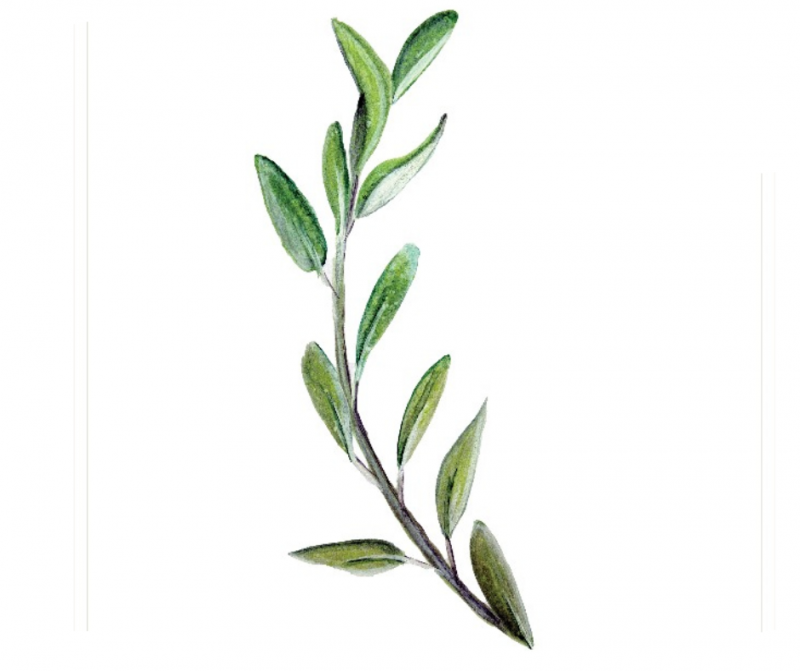
Sage was highly regarded in the past, particularly at the medieval Medical School of Salerno, in Southern Italy, as the following verses from its Herbal shows:
Why should a man die if sage grows in his garden?
Against the power of death there is no remedy in gardens.
Sage strengthens the sinews, and stops hands from trembling,
and by its helping action acute fever flees.
Sage, beaver musk and lavender, primrose,
nasturtium, tansy, all these heal paralyzed limbs.
Sage the Savior, reconciler of nature.
Sage gives a healthy head and does so for Hadrian.
Wesley’s recommendations:
231 – Sunburn (smarting) – Wash face with sage tea.
Other therapies
Aswell as treating sunburn, its anti-inflammatory benefits could be used to soothe skin irritations and reduce acne. Sage can be used as a mouthwash or gargle for sore throats and to promote good dental health, as well as loss of appetite, flatulence, and diarrhoea.
Carrot (daucus carota)
There are purple, violet, yellow and white carrots but the orange ones, we are familiar with, have only been grown from the 18th century. The Greeks cultivated them for medicinal use and valued them as a stomach tonic. Conical rooted varieties seem to have occurred in Asia Minor, around 1000 AD. Moorish invaders took them to Spain in the 12th century and they reached England by the 15th century. Purple varieties were most popular, even though they tend to turn a brown colour when cooked. The Elizabethans used carrot flowers and leaves as fashion accessories for hats and dresses as they were valued as a substitute for feathers. Carrots were also taken to America by the Pilgrim Fathers.
Wesley’s recommendations:
104 – Extreme Fat – Use a total vegetable diet.
286 – Putrid Wounds – Apply a carrot poultice; but if gangrene comes on, apply a wheat flour poultice (after it has been seen by the fire till it begins to ferment) nearly cold. It will not fail.
Use a total vegetable diet. I knew one who was entirely cured of this by living a year thus: she breakfasted and supped on milk and water (with bread) and dined on turnips, carrots or other roots, drinking water – JOHN WESLEY
Other therapies
Carrots were first used as medicinal herbs rather than vegetables, and today they have the duel purpose of acting as therapeutic agents and providing an excellent source of beta-carotene (a form of vitamin A) but they also contain many other vitamins and minerals. Modern research suggests they help guard against many forms of cancer, reduce blood cholesterol and help prevent food poisoning.
Parsley (Petroselinum crispum)
The ancient Greeks thought parsley a sacred herb and used it in funeral ceremonies. It was also used to make garlands to crown the winners of the Isthmian Games. Hercules is said to have chosen parsley for his garlands. Whilst the Greeks fed it to their horses the Romans are said to have eaten great quantities of parsley, believing it would prevent intoxication. Parsley was introduced to this country from southern Europe in the 16th century.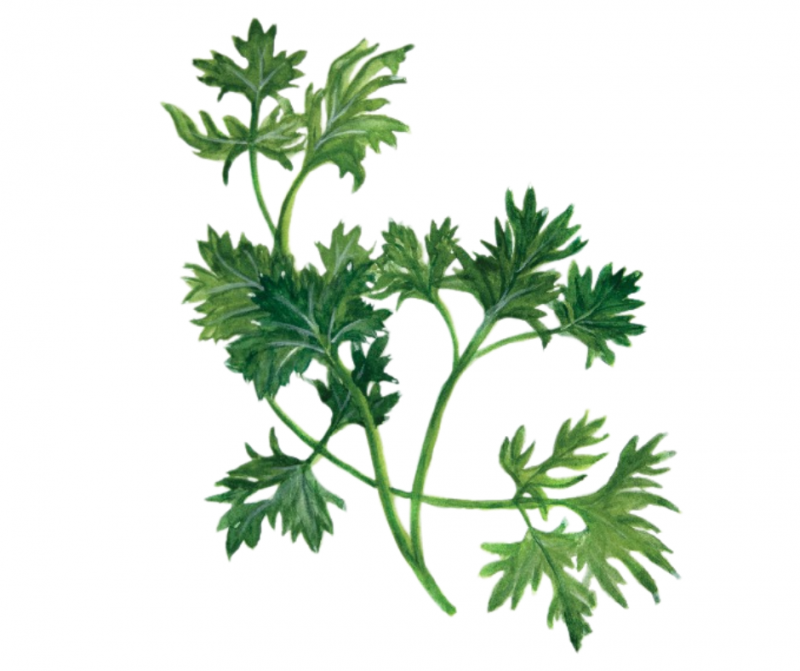
The flat leaved variety was the first one known here. There are many superstitions which surround the herb. In some places it is thought unlucky to offer it as a gift, or to move it to a new house. In some places only children are allowed to plant the seeds.
There is also a legend connected with the length of time it takes to germinate, which says that it has to go to the devil and return seven times before it will grow. Another legend insists that for a fine harvest the seeds should be planted on Good Friday.
Wesley’s recommendations:
21 – A Bruise – Apply a plaister of chopt parley mixed with butter.
Other therapies
This popular herb is cultivated worldwide and all parts are used medicinally. It is one of the most nutritionally rich foods especially as it is usually eaten raw. It is a traditional diuretic and is exceptionally high in vitamin C and carotenes. People who eat foods rich in these antioxidants have a lower risk of cancer, heart disease, cataracts and strokes.
Garlic (Allium sativum)
Garlic is as old as the earliest civilisations and in Chinese mythology it is thought of as a protection against the evil eye. It was fed to the athletes at the original Olympic Games to protect then from the plague and to ward off insect bites. Once crushed and exposed to the air, it has a strong anti-bacterial action and during the First World War, when chemical drugs were not available, it was applied to wounds to stop them turning gangrenous.
Wesley’s recommendations:
70 – Deafness with a headache and buzzing in the head – Peel a clove of garlic, dip it in honey, and put it in your ear at night with a little black wool. Lie with that ear uppermost. Do this, if need ne, eight or ten nights – Tried.
77 – Ear Ache from Cold – Boil rue, or rosemary, or garlic and let the steam go into the ear through a funnel.
135 – Hoarseness – Rub the soles of the feet before the fire with garlic and lard well beaten together, over night.
164 – An Old or Stubborn Pain in the Back – Apply garlic and hog’s lard to the feet – Tried.
185 – Rheumatism – 6 or 7 cloves of garlic in half a pint of white wine drunk lying down. It sweats and frequently cures at once.
201 – Shingles – Drink sea water every morning for a week: towards the close bathe also or apply pounded garlic.
216 – Wasp Sting – Apply bruised garlic.
244 – Toothache – Lay a clove of garlic on the tooth.
259 – Viper or Rattle Snake Bite – Apply bruised garlick.
Other therapies
Garlic contains compounds like allicin that have shown antimicrobial activity, potentially helping to combat infections. Studies suggest it can even block viral entry into cells. Its use is linked to reduced blood pressure and improved cholesterol levels.
Stinging Nettle (Urtica dioica)
Stinging nettles have a long and rich history in medicine. They’ve been used for various ailments, including arthritis, rheumatism, and as a diuretic. The Romans even used them to stimulate blood flow and stay warm.
Wesley’s recommendations:
13 – Bleeding of a Wound – Apply three tops of nettles bruised.
135 – Hoarseness – Dry nettle roots in an oven; then powder finely and mix with an equal quantity of treacle. Take a teaspoonful twice a day.
163 – Old Age.
173 – Violent Bleeding Piles – Lightly boil the juice of nettles with a little sugar; take two ounces. It seldom needs repeating.
215 – The Sting of a Nettle – Rub the part with the juice of nettles.
244 – To Cure the Tooth-ache – Lay bruised or boiled nettles to the cheek.
250 – To draw our thorns, splinters or bones – Apply nettle roots and salt.
Take a decoction of nettles for old age – these will probably renew their strength for some years – JOHN WESLEY
Other therapies
Stinging nettles are viewed as a promising natural treatment for hay fever, and in studies using animal subjects the stinging nettle has been seen to lower blood pressure whilst raising the heart’s antioxidant defenses. In addition, in a three-month study with 46 people, taking 500 mg of stinging nettle extract three times daily this significantly lowered blood sugar levels compared to a placebo and medicines containing stinging nettle extract have been found to reduce excessive bleeding, especially after surgery.



